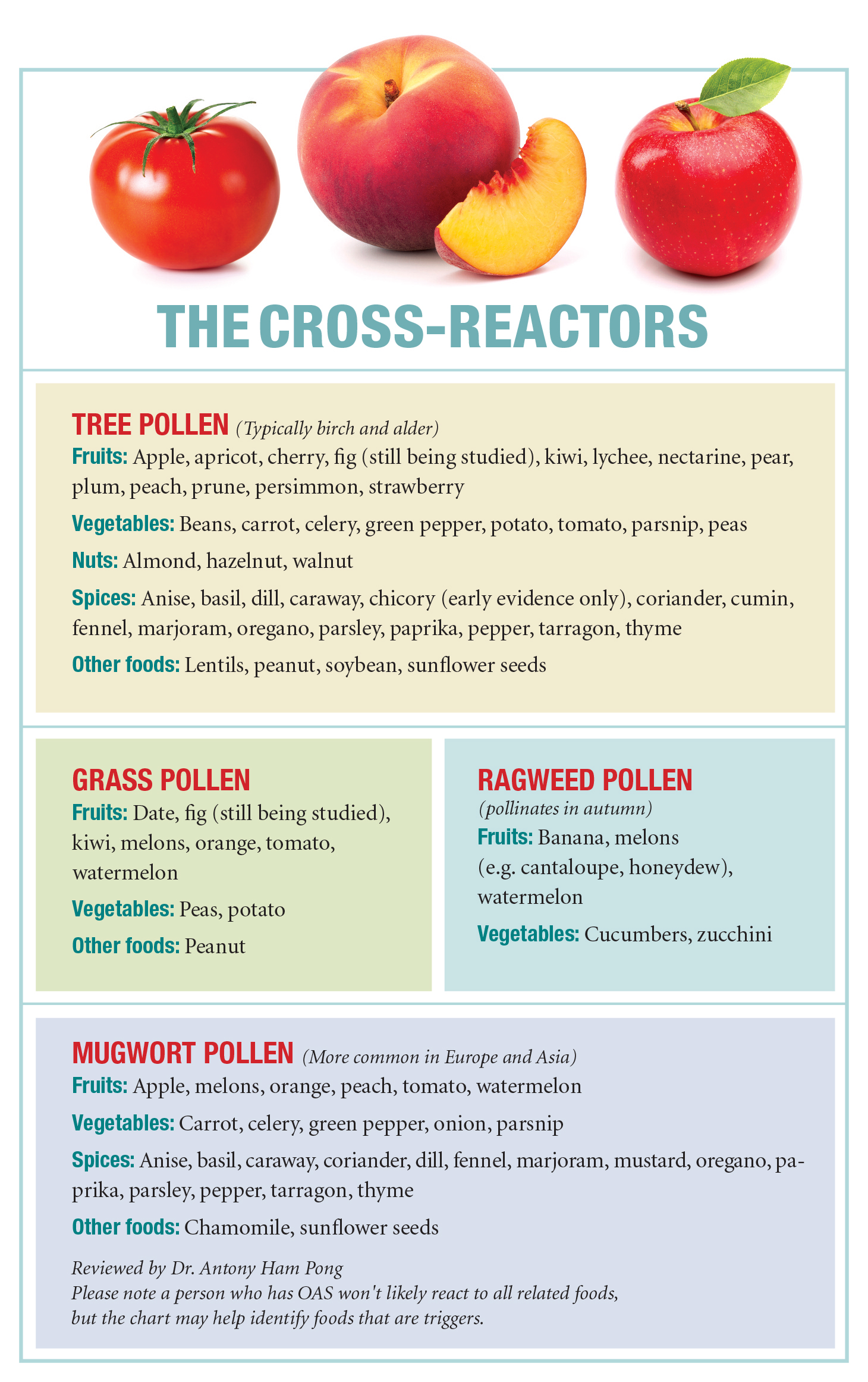
This week I saw a patient for the first time. As usual I needed to get to know her, so I was steadily going through her past history. Pretty standard list for a young lady, until she described one condition called Oral Allergy Syndrome (OAS).
“Have you ever heard of Oral Allergy Syndrome?” she proclaimed. The look on my face said it all! So clearly I had a bit of research to do, and here’s what I found out.
It turns out that OAS is actually a relatively common form of food allergy. Particularly common in adults, it occurs in those with pollen allergy, although not everyone also suffers the classic hay fever or seasonal allergy symptoms. Sufferers classically experience itchiness and swelling in the mouth and throat after eating certain uncooked plant food - fruits, nuts, or vegetables - that are high in pollen related proteins. These proteins trigger an immune response inside the mouth – akin to tiny hives (urticaria) popping up everywhere. Thankfully it’s rare for sufferers to experience more life threatening, whole body, anaphylactic reactions.
OAS (or Pollen-food allergy syndrome as it is known most accurately in the medical world) can develop in childhood, or later as an adult, and effects about 5% of people. Usually allergic rhinitis develops first, with OAS coming in later, and if you’ve got it – then you’re stuck with it for life.
Symptoms come up within 5-10 minutes of ingesting the culprit food, effecting the lining of the lips and mouth, and consist of:
- Itchiness
- Tingling
- Redness
- Swelling
- Seized vocal chords
Some suffers may also experience other symptoms that don't affect the mouth and throat, including vomiting, diarrhea and abdominal pain, while others may develop itching, redness, or slight swelling of the hands if they peel or handle raw fruits or vegetables that cause OAS, such as mangoes, apples, onions and capsicum.
Symptoms vary with the seasons, and are worse when pollen counts are highest – Spring and summer in Australia. People tend to react more to the peel of raw fruits or vegetables, and cooking tends to reduce the symptoms – sometimes to zero.
So what are the culprit foods?
Well, looking into it, it’s basically any plant food – pretty much any fruit, nut or vegetable could be the cause! Check out the chart below for some of the most common culprits.
How do I know if I’ve got it?
Have a chat with your GP who can refer you to an allergist for a full work up – including skin prick testing, blood tests, and possibly some oral challenge tests.
So what do I need to do?
Clearly, the small percentage of people who get total body or anaphylactic symptoms need to avoid these foods altogether, and carry an epi-pen.
Those who only experience the local mouth symptoms can manage their exposure to culprit food depending on symptom severity. Some people find they can put up with the symptoms easily, and only put effort into avoiding large amounts or concentrates of their trigger foods. Others find it’s ok if their foods are cooked. Some need expert advice from dietitians in order to avoid all traces because their symptoms are too worrisome.
The bottom line is – if you can put up with it, it’s not dangerous to eat the culprit foods.
Antihistamines shouldn’t be used just so you can keep eating culprit foods, but, they can be useful to reduce symptoms when accidents do happen and your worried about mild oral symptoms. Immunotherapy – coordinated by an allergist – has been proven to reduce hay fever and asthma symptoms, but unfortunately there’s no current evidence it works for OAS.
Bottom line is, if you think OAS is a problem for you then get a referral to an allergist who can explore the issues further. It’s certainly a condition I’m going to be more on the look out for now.
Allergy chart image source: www.allergicliving.com